Fossil Hunt is on
In the early years of the 20th century scientists were consumed with finding the “missing link” between man and apes. Fossils of early man were being found all over the world. In Europe some significant finds were made in France and in Germany.
In 1907, a jawbone found in Germany , it seemed to have both human and ape characteristics and was considered a significant find, but not really conclusive evidence all by itself. More fossils needed to be found.
ENGLISH FOSSIL FOUND
In England, there was no luck in finding missing link evidence. All over Europe more and more evidence of remains, stone tools, etc were being found, but not in England. This does make sense, England is an island and it probably wasn’t populated until long after the European mainland. But finding evidence of early man was a matter of pride for the British scientific community. Piltdown man was their best evidence, unfortunately it turned out to be a blatant forgery.
The mystery of who perpetrated the fraud exists to this day. Piltdown Man is considered one of the most damaging scientific frauds of all time. Scientists spent their entire careers working to find further evidence of something that was a fake. It set back the study of evolution for years and destroyed many careers.
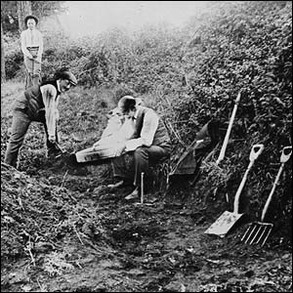 DIGGING FOR FOSSILS |
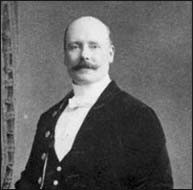 CHARLES DAWSON |
DISCOVERY IN RURAL ENGLAND
Charles Dawson was a lawyer by training but an archeologist by avocation. In the early part of the 20th century archeology was just becoming a profession, with degrees available, but most of the important work was still being done by amateurs and Dawson seemed to be a talented one. He made several important discoveries, most of which have now been exposed as frauds and Piltdown Man was his most famous find.
In 1912, Dawson was digging in a gravel pit near Piltdown, England. He had been excavating the pit for several summers with some interesting results: he found some skull fragments and crude stone tools. In 1912, Dawson was working with Pierre Teilhard de Chardin, a French priest who did archeology as a hobby. The men made some interesting finds, including some skull fragments and contacted Dawson contacted Arthur Smith Woodward, who worked for the British Museum as head of the Department of Geology.
Woodward visited and starting digging with the 2 men, they began to go over the gravel pit and soon Dawson came up with another skull fragment, and later the men found a lower jaw (mandible) that seemed to match the skull. The teeth were worn, which showed that the jaw came from a human not an ape. Apes do not use their back teeth in the same way as humans. The skull fragments did not seem to be like an ape, the bone was thick with a large brain capacity. This seemed to be the missing link between ape and humans.
ACCEPTED BY SCIENTIFIC COMMUNITY
Woodward took the combined bones to a meeting of the Geological Society of London and stated firmly that the skull and jawbone came from a human who was at least 500.000 years old, placing it in the Lower Pleistocene period. Woodward was convinced this was the missing link. The new theory was that the German Neanderthal and the Piltdown man were two different evolutionary strains from early apes.
The evidence had been found in England, giving that country the glory and the British Museum now owned the prestigious artifact. British pride in the find was high and for a number of years Piltdown Man was accepted as the Missing Link. The skull was renamed Eoanthropus dawson (Dawson’s Dawn Man) after the man who made the discovery.
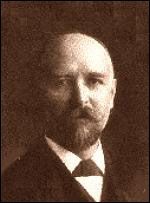 WOODWARD |
ARTHUR SMITH WOODWARD
Dawson died in 1916, after making more discoveries of artifacts from early man. So he was never exposed as a fraud, assuming he was the guilty party. Arthur Smith Woodward was also a good candidate for the forger. He was there when the discovery was made and could easily have planted the doctored skull. Woodward made his living in science so finding the missing link wasn’t just a matter of pride, he had an economic incentive. Finding the skull and getting it his employer, the British Museum, could do his career a lot of good. Woodward vigorously defended Piltdown Man against all that doubted it. And as time went on, more and more people in the scientific community became skeptical.
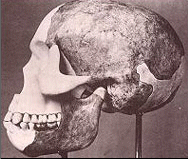 PILTDOWN SKULL |
EXPOSED AS FRAUD
There were some early skeptics about Piltdown Man, but Dawson and later Wooodward, were able to counter all argument. This absence of a canine tooth in the jaw troubled some, but in 1913, Teilhard conveniently found a canine tooth at the Piltdown dig..
The skull was not really available for scientists to examine and the prestige of the British Museum also silenced some critics. By the late 1940’s , an English geologist, had devised a new test to determine if sets of bones were the same age. By 1949, he expressed some skepticism about the age of Piltdown. But he needed some better tests to make a definitive determination.
HOAX VIDEO
It wasn’t until 1953 that the British Museum had a group of researchers subject the skull to a battery of scientific tests. The findings shocked the scientific world. The skull was of a prehistoric man, but only about 50,000 years old, not the 500,000 that was originally claimed. The jawbone didn’t come from the human skull, it was from a modern orangutan, only a few decades old. The jawbone had been stained to make it look older and the teeth filed to look more like human teeth. The jaw also had the hinge broken off, which made it harder to identify it as the remains of an ape.
In November 1953 researchers announced “it is now clear that the distinguished paleontologists and archeologists who took part in the excavations at Piltdown were the victims of a most elaborate and carefully prepared hoax.
WHO WAS THE FORGER?
Now the skull was proved to not be the missing link, but a crude forgery, the question became who did it? Who faked the evidence and planted it in that gravel pit in 1912?
Dawson is the best candidate, he was obsessed with becoming a famous scientist. Several of his other finds have been exposed as frauds. He had continued to dig at Piltdown and make discoveries, but after his death, nothing else was found at the site.
Pierre Teilhard de Chardin went on to have a prestigious career as an archeologist. It is viewed as suspicious that even though he was involved in the discovery of the Piltdown skull, he never studied or wrote about it. This was an important find, it would make sense for him to study the skull. Maybe he planted it as a prank and didn’t expect it would be so important? He couldn’t confess and risk his career. No one knows for sure
OTHER CANDIDATES
Woodward also worked at the site and his career was enhanced by the find, so he might have done it. Woodward did study and write about the skull, his career was tied to the artifact. But Woodward was generally considered to be an honest scientist and not someone who would endanger his career by participating in a fraud.
But Martin Hinton, who also worked at the British Museum, was considered to be a better candidate for forger. He hated Woodward for refusing him a job and might have enjoyed watching him take seriously something he planted just to embarrass him. I n1975 a box full of stained bones was found that belonged to Hinton. Maybe he used the bones to practice on before staining the orangutan jawbone. But, he also might have been running tests to expose Piltdown Man as a fraud.
A most unlikely candidate is Sir Arthur Conan Doyle. He lived closed to the gravel pit and could have easily planted the skull. But what would be his motivation? He was already a famous author and respected public figure. But what is less well known about Conan Doyle is his interest in the supernatural. He followed spiritualists , believed in ghosts, psychics and fairies and just about anything to do with the occult. His beliefs were ridiculed by scientists of the day and Professor John Winslow presents a convincing case that Conan Doyle would plant the evidence as a practical joke. He would then ridicule the scientists for falling for such a crude forgery. But it was such a sensation, that he didn’t dare. It is an interesting theory, but Dawson is the best candidate. He made the find, was not adverse to committing fraud and had the most to gain. But, of course, we will never know.
 |  |
| The Piltdown Man Hoax: Case Closed The History Press | Hoax: Hitler's Diaries, Lincoln's Ass... The University Press of Kentucky Only $2.99 |
You might also like
Writing About History on WizzleyDo you want to write a history article for Wizzley, but don't know which sub-...
Thinking About SlaveryPeople of all nations have been victims, culprits and opponents of slavery.
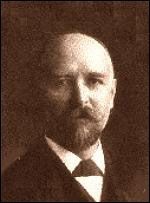


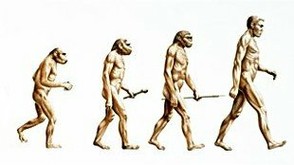
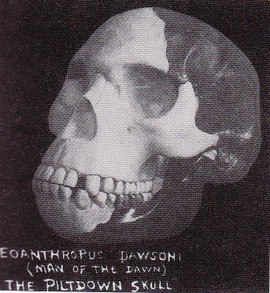
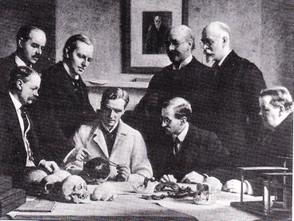
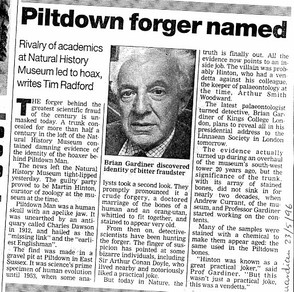
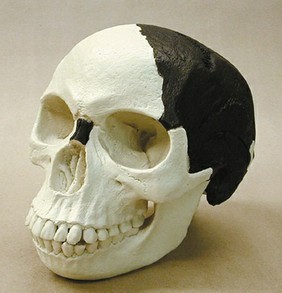
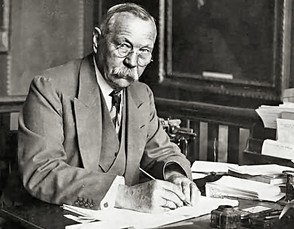

 Invention of Breakfast Cerealon 08/24/2011
Invention of Breakfast Cerealon 08/24/2011
 Sniglets Words that don't appear in a Dictionary but should.on 08/24/2011
Sniglets Words that don't appear in a Dictionary but should.on 08/24/2011
 Halloween romantic superstitionon 08/23/2011
Halloween romantic superstitionon 08/23/2011
 Safety Bicycle sparks cycling craze in USon 08/23/2011
Safety Bicycle sparks cycling craze in USon 08/23/2011

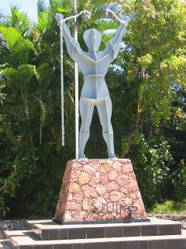
Comments
Nice to find a cultural article on here.